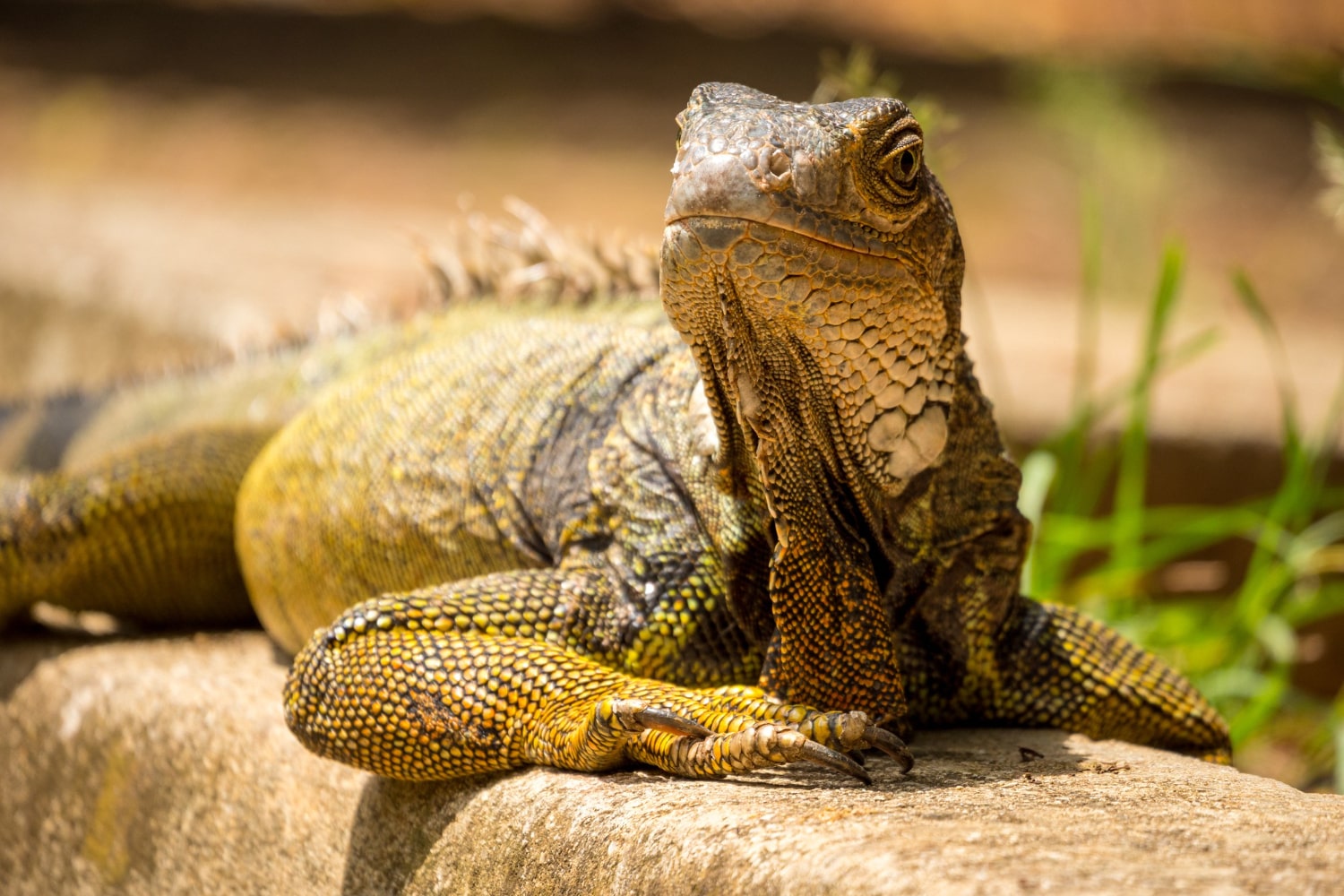Iguanas are fascinating lizards that captivate with their appearance, behavior, and remarkable ability to adapt to their environment. They can be found in tropical forests, rocky shores, and even in gardens and parks near human settlements. These reptiles play an important role in ecosystems and are also commonly kept as exotic pets. You might not know that iguanas possess many unique traits that set them apart from other lizards. Below is a collection of interesting and educational facts about these ancient inhabitants of our planet.
- Iguanas have lived on Earth for millions of years and are considered among the oldest modern reptile species. Their ancestors appeared in the Mesozoic era when dinosaurs roamed the planet. Their body structure has changed very little, which shows how well they are adapted to survive.
- There are many species of iguanas, with the green iguana and the marine iguana being the most well known. The marine iguana is the only lizard in the world that spends part of its life in the ocean. It lives exclusively on the Galápagos Islands and feeds on sea algae.
- Green iguanas can grow up to two meters long including their tail. The tail can make up half of their total body length and is used as a defense weapon. In case of danger, an iguana will whip its tail at a predator.
- Iguanas are herbivores, which is uncommon among large lizards. They eat leaves, flowers, young shoots, and fruits. Their digestive system is specially adapted to process high-fiber plant material.
- Iguanas have excellent vision and can distinguish colors, which helps them find ripe fruits. In addition to their two eyes, they have a third eye called a parietal organ on the top of their head. This eye does not form images but detects changes in light, aiding in spatial orientation.
- The skin of an iguana is covered in scales and features a prominent crest along its back and tail. It provides protection from sunlight, parasites, and predators. The color of their skin can change depending on temperature, stress, or hormone levels.
- Iguanas shed their skin regularly, especially when they are young and growing fast. In older individuals, this process slows down. During shedding, they become less active and avoid physical contact.
- Despite their calm appearance, iguanas have strong limbs and sharp claws that allow them to climb trees with ease. They are excellent climbers and can even jump from great heights and land safely. This helps them escape predators and find food.
- When threatened, an iguana can drop part of its tail, which will eventually grow back. This process is known as autotomy. The new tail is usually shorter and has a slightly different shape.
- Iguanas do not have vocal cords but can hiss or snap their jaws to warn off threats. They also use body language such as head bobbing, inflating their throat pouch, or changing posture to communicate with others. These signals help establish territory or warn intruders.
- Iguanas usually breed once a year, and a female can lay up to 70 eggs in a burrow she digs in the ground. The eggs develop in the soil for several months before hatching. Hatchlings are completely independent from birth.
- In the wild, iguanas can live up to 15–20 years, and in captivity even longer. They need proper care including lighting, temperature, humidity, and diet. With good care, iguanas can become tame and recognize their owners.
- Marine iguanas can hold their breath for 30–40 minutes while diving for food. After coming out of the cold ocean, they warm up by basking in the sun. This helps them conserve energy and survive in harsh coastal environments.
- Iguanas have a complex thermoregulation system that allows them to use solar heat efficiently. They bask in the morning sun to raise their body temperature and seek shade during the hottest parts of the day. This is a typical behavior of cold-blooded animals.
- In some cultures, iguanas are considered a delicacy and are used in traditional cuisine. For example, in Central America, iguana meat is used in soups and stews. Due to hunting and habitat loss, some iguana species have become endangered in certain regions.
- Iguanas have adapted well to living near humans and can be seen in tropical gardens, city parks, and even on rooftops. They attract the attention of tourists and nature lovers. However, feeding wild iguanas can disrupt natural ecosystems and should be avoided.
- In some countries, there are rescue centers for injured or abandoned iguanas that cannot return to the wild. These facilities also engage in public education and reptile conservation. Thanks to such efforts, awareness about biodiversity is increasing.
These amazing facts about iguanas show how ancient, diverse, and resilient these creatures truly are. They have adapted to various environments ranging from forests to rocky coastlines. Iguanas deserve our attention not just as exotic pets but as essential components of nature. Observing them helps us better understand evolution, ecology, and the delicate balance between humans and the natural world.





